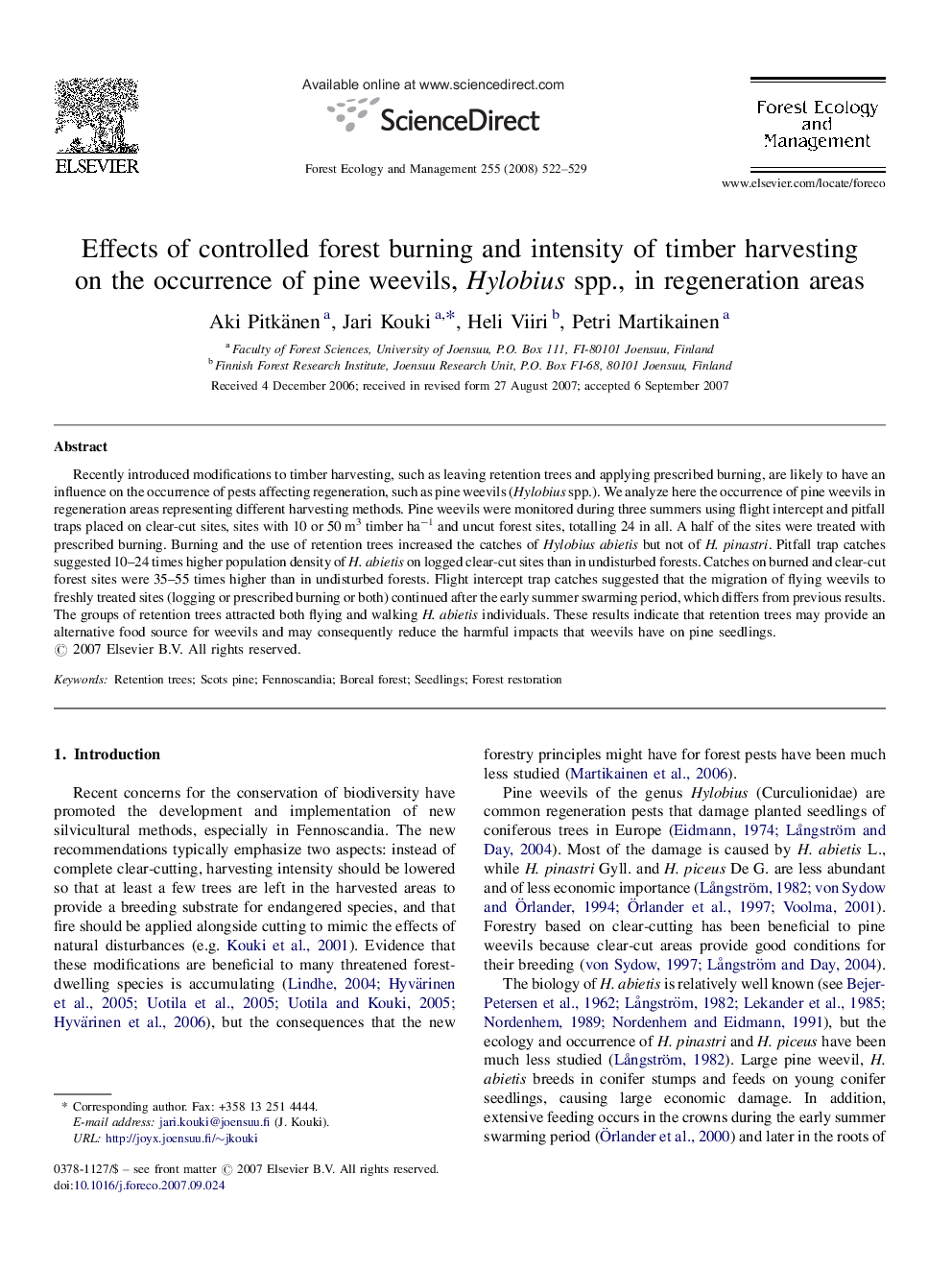| Article ID | Journal | Published Year | Pages | File Type |
|---|---|---|---|---|
| 89830 | Forest Ecology and Management | 2008 | 8 Pages |
Recently introduced modifications to timber harvesting, such as leaving retention trees and applying prescribed burning, are likely to have an influence on the occurrence of pests affecting regeneration, such as pine weevils (Hylobius spp.). We analyze here the occurrence of pine weevils in regeneration areas representing different harvesting methods. Pine weevils were monitored during three summers using flight intercept and pitfall traps placed on clear-cut sites, sites with 10 or 50 m3 timber ha−1 and uncut forest sites, totalling 24 in all. A half of the sites were treated with prescribed burning. Burning and the use of retention trees increased the catches of Hylobius abietis but not of H. pinastri. Pitfall trap catches suggested 10–24 times higher population density of H. abietis on logged clear-cut sites than in undisturbed forests. Catches on burned and clear-cut forest sites were 35–55 times higher than in undisturbed forests. Flight intercept trap catches suggested that the migration of flying weevils to freshly treated sites (logging or prescribed burning or both) continued after the early summer swarming period, which differs from previous results. The groups of retention trees attracted both flying and walking H. abietis individuals. These results indicate that retention trees may provide an alternative food source for weevils and may consequently reduce the harmful impacts that weevils have on pine seedlings.
